Curriculum and Program Practices
SETA, along with its delegate agencies and EHS partners, implement a comprehensive curriculum that meets the needs of the children enrolled in the program. In the Head Start and Early Head Start center-based program option, Creative Curriculum, is used. Parents as Teachers curriculum is used in the home-based program.
Desired Results Developmental Profile Data (DRDP)
The Desired Results Developmental Profile (DRDP) is used for child assessment to measure developmental progress across multiple domains. Each agency measures growth in all areas and the data is analyzed at the individual child, classroom, center, agency, and countywide levels.
-
Sacramento Countywide HS Preschool DRDP Data 2023-2024
-
Sacramento Countywide EHS DRDP Data 2023-2024
| Domain | Fall 2023 * | Spring 2024* | Percentage of Growth |
|---|---|---|---|
| Approaches to Learning | 42% | 77% | 83% |
| Social-Emotional Development | 46% | 83% | 80% |
| Language and Literacy Development | 38% | 77% | 102% |
| Cognition, Math and Science | 39% | 59% | 52% |
| Physical Development | 60% | 86% | 43% |
| English Language Development | 68% | 84% | 23% |
| Domain | Fall 2023 | Spring 2024 | Percentage of Growth |
|---|---|---|---|
| Approaches to Learning | 22% | 27% | 34% |
| Social-Emotional Development | 22% | 25% | 34% |
| Language and Literacy Development | 25% | 32% | 40% |
| Cognition, Math and Science | 15% | 21% | 33% |
| Physical Development | 32% | 41% | 47% |
Key Findings
HS Preschool
Language and Literacy Development domain saw the most significant growth. Responsiveness to Language and Communication (Expressive) Measure within this domain had the highest number of children scoring in the top two developmental levels. Phonology Measure had the lowest percentage in both Building Later and Integrating levels. Cognition, while having a smaller percentage increase at 52%, still showed a larger increase in the 2023-24 program year as compared to 2022-23. Number Sense of Quantity Measure within this domain had the highest number of children scoring in the top two developmental levels, while there was a tie between four measures for the lowest percentage of children scoring in those same developmental levels (22%) in Number Sense of Math Operations, Patterning, Inquiry Through Observation and Investigation, and Documentation and Communication of Inquiry. Physical Development’s growth percentage was the smallest, but this domain had the highest number of children rating in the top two developmental levels than the others in the fall through spring.
EHS
Physical Development domain had the highest growth percentage increase from Fall to Spring at 47%. Cognition domain had the lowest overall growth percentage, but the second highest rate of children scoring in Building Earlier. Cause and Effect Measure within this domain had 31% of children scoring in Building Earlier, while Number Sense of Quantity Measure had the lowest percentage of children scoring in that same developmental level.
CLASS™
The Office of Head Start (OHS) uses the Classroom Assessment Scoring System (CLASS)® as a benchmark for high-quality teacher-child interactions. Scores are categorized into three domains. Programs use their CLASS observation results to guide professional development for teaching staff to improve and strengthen their interactions with children in the classroom.
Countywide Head Start Pre-K CLASS Average Score
| Emotional Support (ES) Domain |
Classroom Organization
(CO) Domain |
Instructional Support
(IS) Domain |
|
|---|---|---|---|
| Countywide Scores | 6.4 | 6.3 | 3.5 |
SETA-Operated Program (SOP) EHS Toddler CLASS Average Score
| Emotional and Behavioral Support (EBS) Domain |
Engaged Support for Learning Domain |
|
|---|---|---|
| SOP Scores | 6.8 | 4.22 |
- In Emotional Support the lowest dimension was Regard for Student Perspective at 5.74; the highest was Teacher Sensitivity at 6.86.
- In Classroom Organization the lowest dimension was Instructional Learning Format at 5.53; the highest was Productivity at 6.88.
- In Instructional Support the lowest dimension was Concept Development at 3.03; the highest was Language Modeling at 4.01.
Head Start Pre-K
- In Emotional and Behavioral Support, the lowest dimension was Behavior Guidance at 6.8; the highest was tied between Positive Climate and Teacher Sensitivity at 7 each.
- In Engaged Support for Learning the lowest dimension was Quality Feedback at 4.2; the highest was Facilitation of Learning and Development at 5.6.
EHS
- Increased the number of SETA staff who are certified CLASS observers through in-house training
- Rollout of CLASS for Coaches three-part series for Site Supervisors, focused on ensuring high-quality coaching and modeling by supervisors, culminating in a two-day Practice-based Coaching (PBC)/Together Learning Collaborating (TLC) workshop
- Worked with the Training and Technical Assistance team from the Office of Head Start (OHS) to develop CLASS Implementation Plan
- CLASS consultation to delegate administrative teams
- Individualized coaching
- Region 9 STEM conference attendees from grantee to extend concept development
- CLASS observations countywide with one hour 1:1 feedback session
Supportive Applications
Home-Based Programs
COUNTYWIDE HOME-BASED PROGRAM – HEAD START AND EARLY HEAD START
Comprehensive services are provided in the home setting integrating health, dental, and mental health curriculum with in-home activities. SETA, San Juan USD, River Oak Center for Children, and the Sacramento County Office of Education use the Parents as Teachers (PAT) Foundational Curriculum as the evidence-based curriculum for both Early Head Start and Preschool Head Start Home Base. This curriculum emphasizes parenting and child development that engages the parent and child together. Early Head Start also enrolls pregnant mothers and the program uses Partners for a Healthy Baby as its home-visiting curriculum. Staff assist enrolled pregnant mothers in accessing pre-natal and postpartum health services, post-partum depression screenings, and nurse visits after delivery.
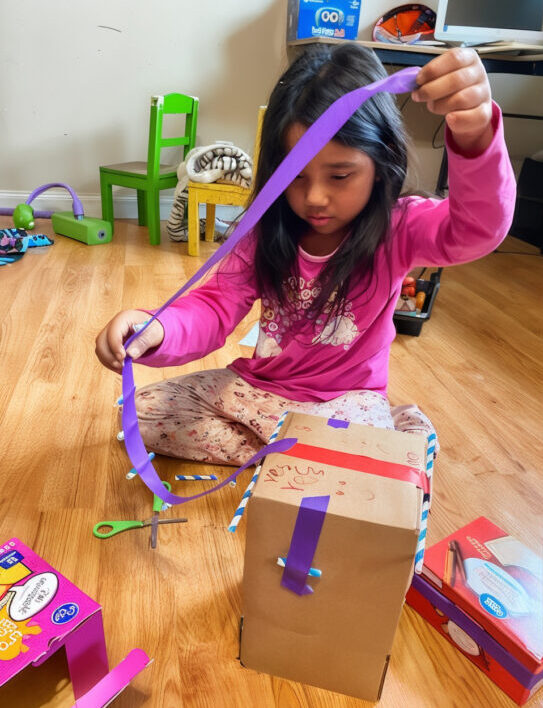
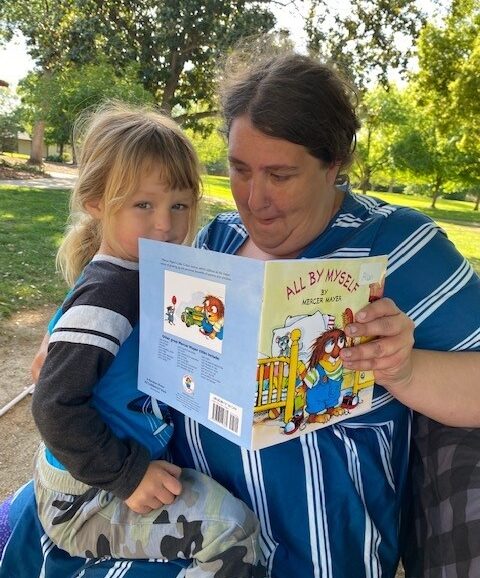
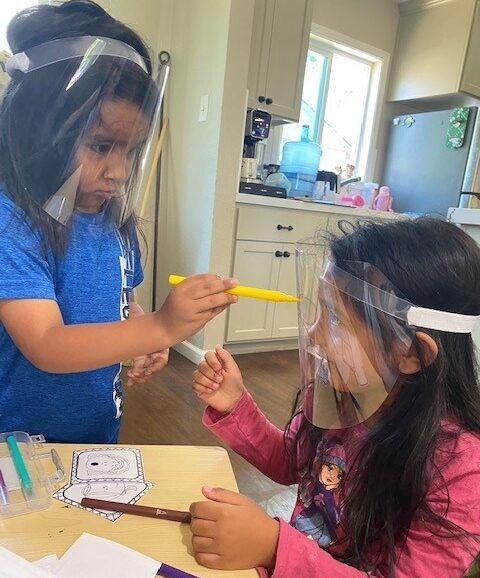
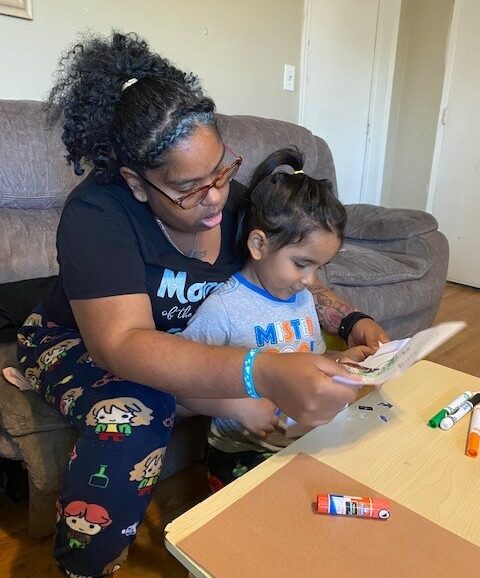
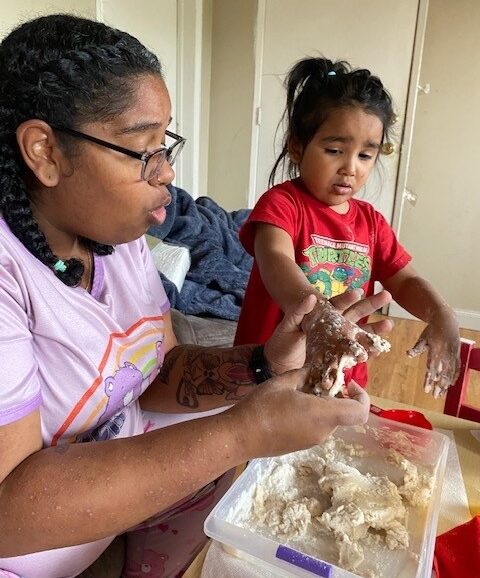
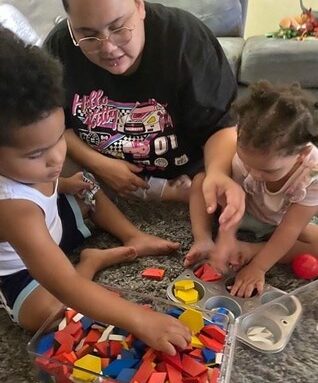
Education Highlights and Community Partnerships
SACRAMENTO COUNTY OFFICE OF EDUCATION (SCOE) FULL INCLUSION
- The full-inclusion preschool program began in 1990 with a collaborative effort between SETA Head Start and the Sacramento County Office of Education (SCOE) Special Education Department.
- The goal of the program is to ensure children with disabilities participate in inclusive preschool settings with their typically developing peers.
- The early learning centers that currently have full-inclusion classrooms are Hillsdale, Grizzly Hollow, and Dudley.
- These three (3) centers have numerous sources of inclusive adult support in each classroom, which include the Head Start staff and SCOE staff, and provide a high-quality and developmentally appropriate curriculum.
- Valuable resources that SCOE provides as part of the partnership:
- Training and professional development to staff (both programs)
- Specialists to offer individualized services to children, e.g. speech therapists, occupational therapists, nurses, 1:1 aide, etc.
- Access to information to individualize services for children with special needs
WESTED MATH PROJECT
SETA has partnered with WestEd, a non-profit education research agency, to conduct a study of math tutoring for pre-kindergarten children who are behind in their math development over the past several years. Eighteen (18) classrooms participated in the project during the 2023-24 program year and worked with students as either part of the control group (business as usual) or the “treatment” group, receiving specialized professional development and curriculum supporting the Pre-K Mathematics Tutorial work.
CALIFORNIA STATE UNIVERSITY, SACRAMENTO (CSUS)
A longstanding partnership with CSU Sacramento has continued to provide student volunteers to support children’s learning. This partnership offers approximately 25 students each semester the opportunity to gain firsthand teaching experience through SETA by serving as substitute teachers in Head Start and Early Head Start classrooms.
JumpStart, a literacy-based intervention program, provides roughly 20 college students at multiple Head Start centers. They provide additional curriculum activities focused on literacy and social-emotional skills. Results from a recent study found that JumpStart children make 1.5x greater gains in important literacy skills than those who don’t receive JumpStart services.
Cal Fresh Nutrition Partnership
Designed by the University of California Agriculture and Natural Resources, the Go, Glow, Grow curriculum supports teachers in promoting healthy lifestyles in preschool classrooms. The age-appropriate small and large group activities in the resources encourage children to eat healthy foods that promote brain growth and healthy bodies. Caregivers play an essential role when they model food tasting and create a positive environment that supports mealtime behavior, picky eaters, and children experiencing food insecurity.
Parent letters, in conjunction with the lessons, allow for the home-school connection. Families also receive healthy recipes they can complete with their children at home. Eighteen sites took part in the program this past year and have enjoyed bringing cooking activities into the classroom and homes.
Community of Practice: Supporting the School Readiness and Success of Young African-American Boys
SETA applied for and was chosen as one of twelve agencies in Region 9 to participate in the Community of Practice (COP): Supporting the School Readiness and Success of Young African-American Boys. Over the last year a core group of members across multiple units took a look at internal practices and identified a goal to address disparities in access and programmatic experience for African American boys served in SETA-Operated Program classrooms. In the first year of implementation, activities have included analysis of program data, training of teaching staff, presentations to governing bodies and an interactive session with families.
The goal identified for SETA is:
By the end of the 2024-2025 program year, SETA will advance social emotional outcomes of African American boys through implementation of equitable, inclusive, and culturally responsive strategies and practices across all service areas.


Professional Development
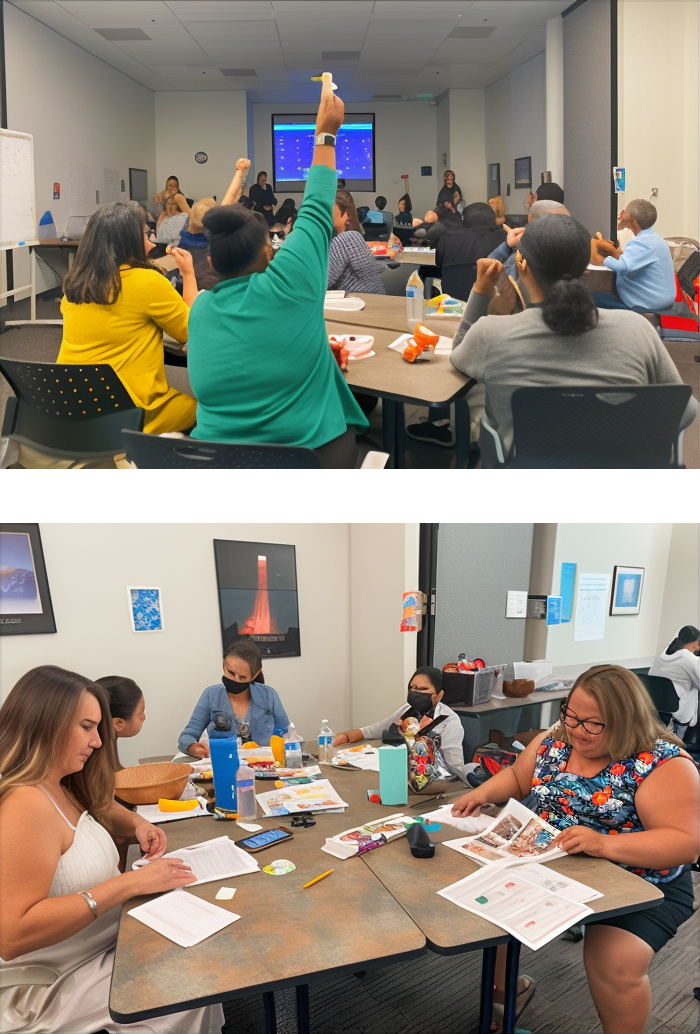
Staff were able to participate in multiple training opportunities to promote operational skills and leadership development. This included attending the Science, Technology, Engineering, and Math (STEM) Conference in Phoenix Arizona, where staff not only went as participants but also took part in a panel discussion about incorporating STEM into the school day. The capacity of SETA staff to provide internal training has grown, and the agency was able to hold more regular small group training events on topics such as Social Emotional Development and CLASS.
Working in collaboration with Training and Technical Assistance from the Office of Head Start, a CLASS Implementation Plan was developed to help increase CLASS scores for both SETA and Delegate agencies over the next five years. This includes the new California State Preschool Program (CSPP) requirement of switching to CLASS 2.0 from the current CLASS 2008 assessment system, and how to do so sustainably.
Through this approach, staff were able to receive more individualized support in understanding the material and have more individual coaching opportunities. A pilot group of Teachers implemented the newest edition of Creative Curriculum (the 6th edition) and provided feedback on the changes and process to the School Readiness Program Officer. This was critical information to gather as in 2024-25 the Creative Curriculum 6th edition will roll out across all SETA Pre-K classrooms.



